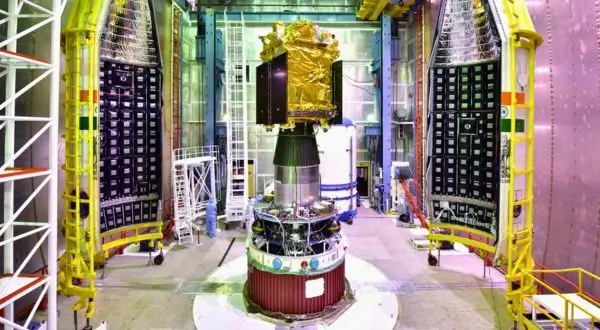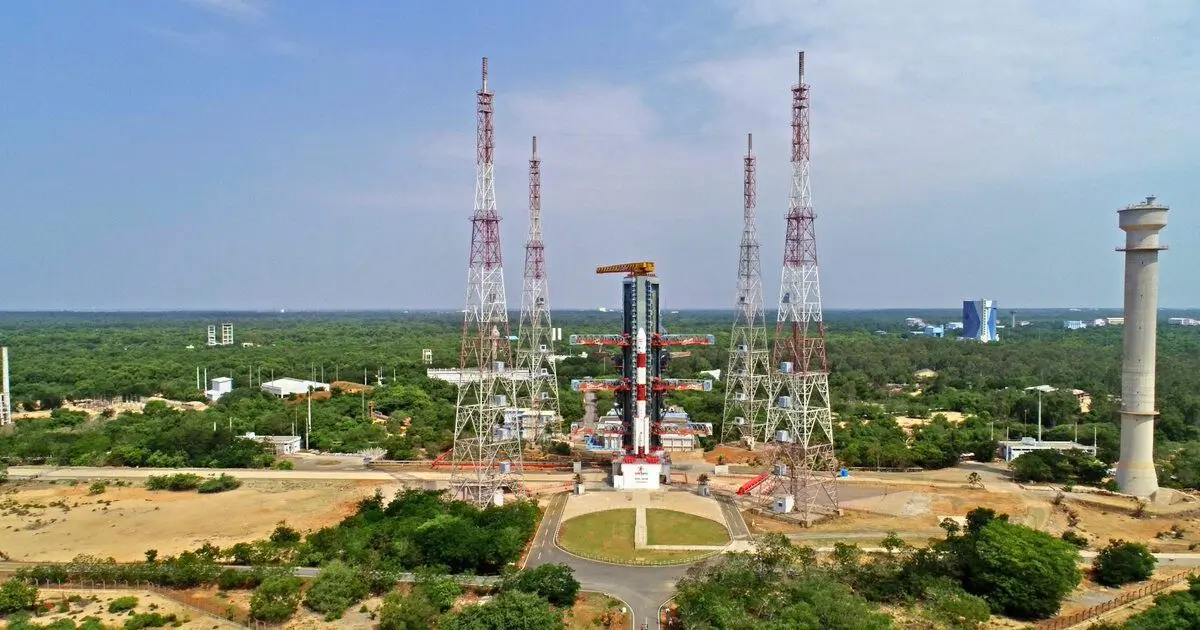In a groundbreaking mission set to deepen our understanding of the Sun and its impact on space weather, the Indian Space Research Organisation (ISRO) is poised to launch the PSLV-C57 rocket carrying Aditya-L1, India’s inaugural space-based solar observatory.
Aditya-L1, a mission of paramount significance, represents India’s foray into solar observation from space. The spacecraft will be positioned in a halo orbit around Lagrangian point 1 (L1) of the Sun-Earth system, approximately 1.5 million kilometers from Earth.
This strategic location provides an uninterrupted view of the Sun, devoid of eclipses and occultation, enabling real-time monitoring of solar activities.
The Aditya-L1 spacecraft is equipped with seven cutting-edge payloads designed to scrutinize various layers of the Sun, including the photosphere, chromosphere, and the outermost region, the corona.
These payloads consist of electromagnetic, particle, and magnetic field detectors. Four of these payloads are directed towards direct solar observation, while the remaining three conduct in-situ studies of particles and fields at L1, contributing vital scientific insights into solar dynamics in the interplanetary medium.
Crucially, Aditya-L1’s payloads are expected to offer pivotal insights into the mysteries of coronal heating, coronal mass ejections, pre-flare and flare activities, space weather dynamics, and the propagation of particles and fields, among other phenomena.
Scientific Objectives of Aditya-L1 Mission

- Solar Upper Atmospheric Dynamics: Aditya-L1 aims to comprehensively study the dynamics of the solar upper atmosphere, including the chromosphere and corona.
- Chromospheric and Coronial Heating: The mission seeks to unravel the mysteries of chromospheric and coronal heating, the physics of partially ionized plasma, the initiation of coronal mass ejections, and solar flares.
- In-situ Particle and Plasma Environment: Aditya-L1 will provide crucial data for analyzing particle dynamics originating from the Sun, enhancing our understanding of solar particles.
- Physics of Solar Corona: The spacecraft will investigate the physics behind the solar corona and its heating mechanisms.
- Plasma Diagnostics: Aditya-L1 will collect vital data on the temperature, velocity, and density of the coronal plasma and loops.
- Coronal Mass Ejections (CMEs): The mission aims to study the development, dynamics, and origin of CMEs, which can have a significant impact on space weather.
- Solar Magnetic Fields: Aditya-L1 will contribute to our understanding of the magnetic field topology and measurements in the solar corona.
- Space Weather Drivers: The spacecraft will provide insights into the origin, composition, and dynamics of solar wind, a key driver of space weather.
The Aditya-L1 mission represents a significant step forward for India’s space exploration efforts and holds the promise of advancing our understanding of the Sun’s complex and dynamic behavior.
By addressing crucial questions about solar activity, Aditya-L1 will contribute to the global scientific community’s knowledge of space weather and its impacts on Earth. ISRO’s forthcoming launch of PSLV-C57 carrying Aditya-L1 marks a historic moment in India’s space exploration journey.


